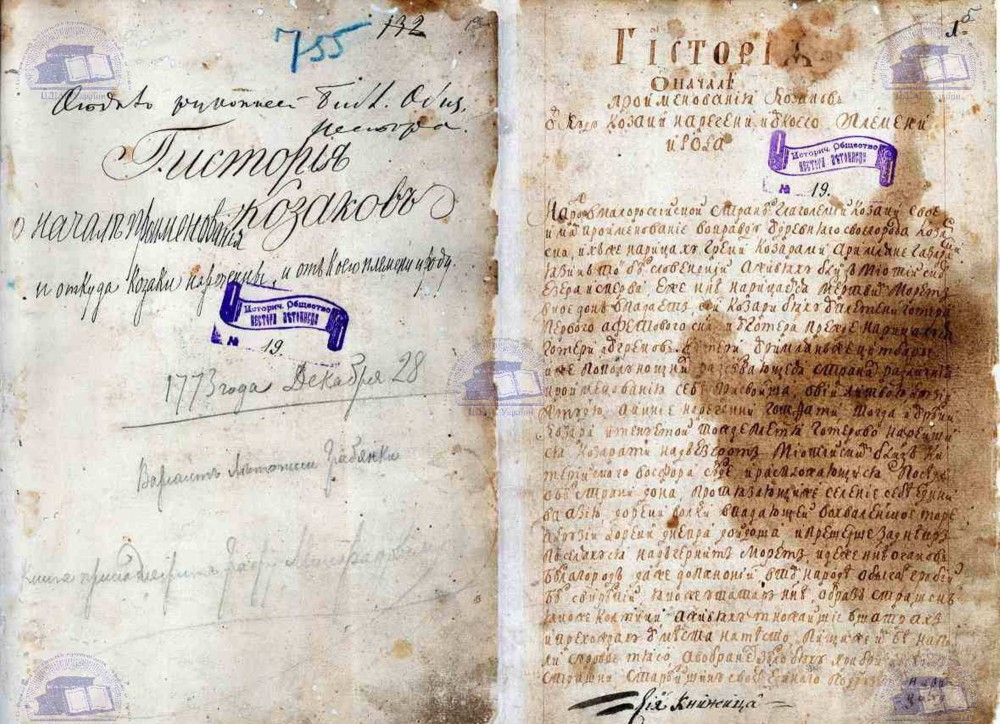
In the article the authors consider Cossack chronicles and diaries of the 17th—18th centuries. from the point of view of covering the issue of economy and money circulation of the Cossack Hetmanate. The source value of each of them is not the same, but they are united by a common idea such as the formation and strengthening of the Cossack Hetmanate of Ukraine, the establishment of economic independence and the struggle of the Ukrainian Hetmans to preserve their autonomy in the conditions of the “Ruin” and the attack on the rights of the Hetmanateby the Russian tsars in XVIII century. It has been investigated that during the reign of the Polish king Sigismund III (1587—1632), the expansion of trade relations led to the spread of gold and coarse silver coins (ducats and thalers) in Ukrainian lands from the countries of Western Europe. Permanent wars waged in the 17th century between Polish—Lithuanian Commonwealth and Turkey exhausted the Polish and Ukrainian economies, the prices of grain and other food products rose, and the value of the thaler and ducat gradually increased. Describing the period of the Russian orders spreading in the Hetmanate under Hetman Ivan Briukhovetskyi (1663—1668), HryhoriyHrabianka clarifies the newly introduced monetary and in-kind taxes introduced in the 60s of the 17th century. There are facts about the use of gold coins in the currency of the Hetmanship and their rate against the Russian ruble and Western European money in the Cossack annals. Another stable unit on the money market was the gold ducat, which was called “red gold” in Ukraine during the period. Chronicles of the beginning of the 18th century are increasingly called Russian small (denga and kopeck) and heavy silver coins and rubles which were introduced into monetary circulation by Peter I. But as M. Kotlyar testifies, were found and investigated 67 Ukrainian finds of this period which contained not only Russian coins but also Western European coins, mainly of the 17th century. Thus, we can make sure that S. Velychko exaggerated the rate of displacement of Western European coins by Russian from the Ukrainian market after the Battle of Poltava in 1709. The monetary figure of the Left Bank of the first third of the 18th century, as evidenced by the above-mentioned diaries, is rather complex: they counted both in the Lithuanian and Polish ways. Copies, gold coins, thalers and Russian kopecks and rubles were used as units of account. This reflected the state of the money market at the time, in which foreign coins and numerals were more common than Russian ones. In the written sources of Left Bank Ukraine, the largest number of references to the сzechs (one-and-a-half pennies) refers to the first quarter of the 18th century. This coincides with evidence of numismatic material regarding the greatest spread of сzechs in the circulation of the Left Bank of the mentioned period. However, in the next two or three decades сzechs remained one of the popular coins of the Ukrainian market.
Source: Kliuiev A.M., Chumachenko O.A. (2022). Ukrainian chronicles, diaries-chronicles of the 17th– 18th centuries about the economy and money circulation of the Cossack Hetmanate. Sumy Historical and Archival Journal. XXXIX: 5-15
Source web-site: https://shaj.sumdu.edu.ua/wp-content/uploads/2023/01/1_Kliuiev_Chumachenko.pdf
Number of views: 2837